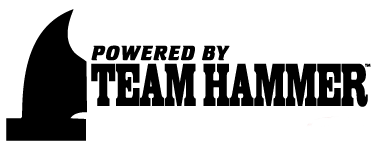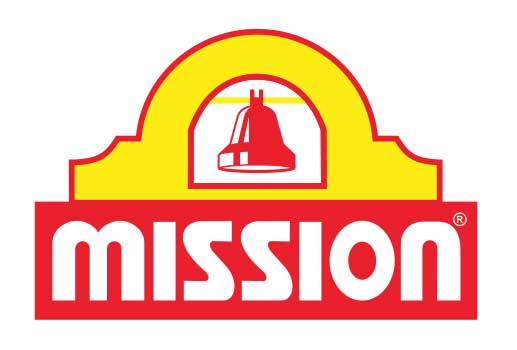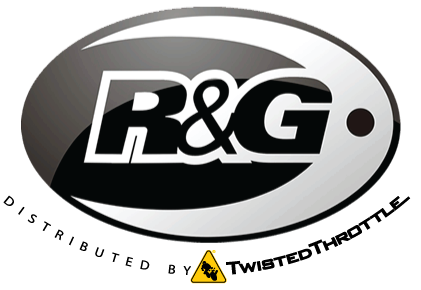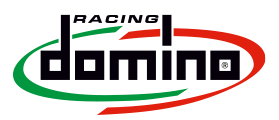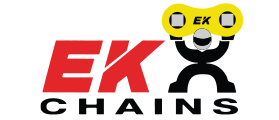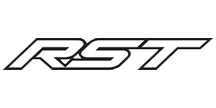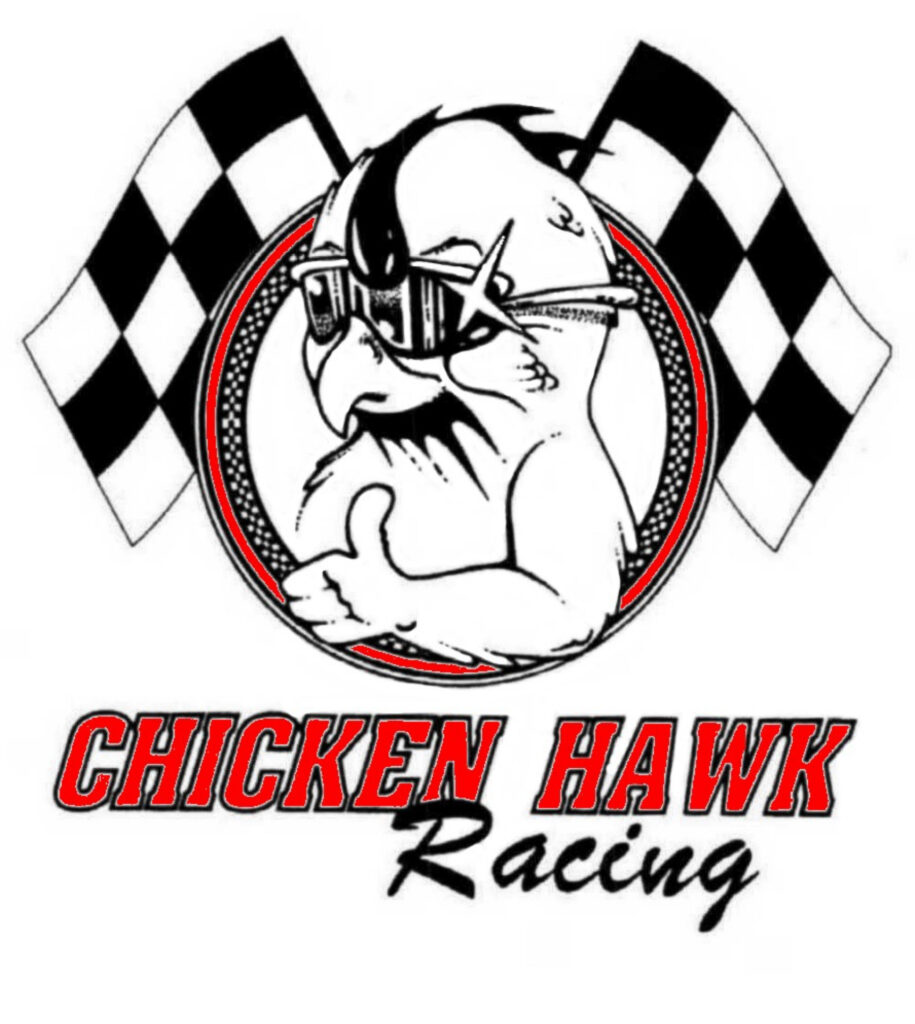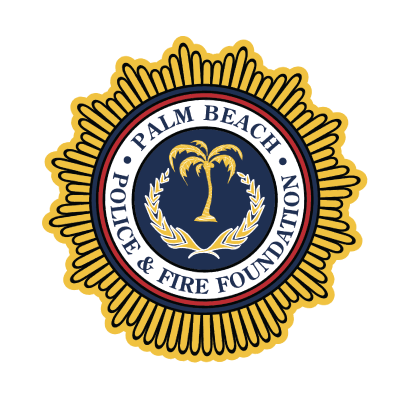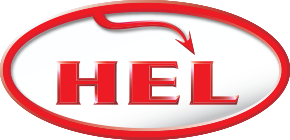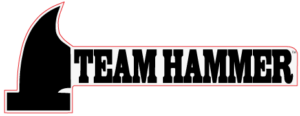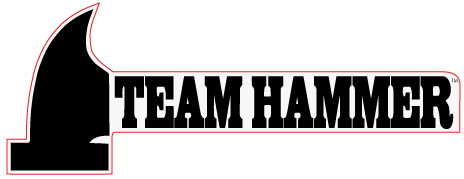It’s easy to forget that this team started out as two guys with one bike, a used truck and a dream of racing success. What turned into the most successful endurance racing team in history didn’t spring out of the ground like a mushroom, fully equipped; the support the team enjoys now was earned the hard way, race win by race win, championship by championship, year after year, with plenty of sacrifice and struggle.
Team Hammer has come a long way from its beginnings in August, 1980, when two privateer racing buddies figured that combining their efforts and their money would give both the chance to race more often on a better bike than either one could afford alone. Bruce Hammer had just finished second in the AMA Formula One Championship, riding a TZ750 he paid for, built and tuned himself. John Ulrich had just returned from racing in the Suzuka 8-Hour, a round of the Endurance World Championship Series, held in Suzuka, Japan. One day when Ulrich excitedly described the sights and machines of Suzuka, Hammer said he wished he could have ridden in Japan. The pair teamed up on the spot and Team Hammer was born.
Its first season had gone uncommonly well, Hammer and Ulrich entering five races and winning three, including two in pouring rain.
But if 1981 was good with a capital G, 1982 was Terrible with a double-sized, boldface capital T. Before May was even over, Bruce Hammer was in a spinal injury ward learning to deal with the fact that he’d never walk again and that he’d only have limited arm and hand movement; Hammer had crashed and slid into a steel barrier, and would spend four months in the hospital.
Hammer had handled all the team’s logistics and finances and had made all the decisions on bike set-up and crew staffing. Suddenly Ulrich had to decide what to do and then get it done, and figure out how to pay for it all. More often than not in those early days, that meant running up credit cards and borrowing money to finish out a racing season and to honor commitments to sponsors, finally paying off the loans just as the next season started rolling. Trying to race without going bankrupt was the trick, and for Ulrich, it meant driving a ratty old truck and scraping every penny to keep the racing program going.
Hammer, a cabinet maker before his crash, learned to live in a wheelchair, retrained himself as a draftsman and mastered getting into a hand-controlled van (which sales of Team Hammer T-shirts helped finance) and driving himself to work. He attended night school and learned to use CAD programs to design custom furniture and building plans on a computer. By the end of the decade, Bruce Hammer was working on serious building projects in the computer design department of a major architectural firm, and then went on to form his own company building high-tech products for wheelchair pilots.
Back on the track, Ulrich and Team Hammer won the team’s first WERA National Endurance Championship in 1983, and came back to win it again in 1984. The team suffered setbacks in 1985, finishing 11th in the series, but regrouped and came back to reclaim the title in 1986 with the help of the team’s first serious support from Suzuki. Team Hammer won again in 1987, racing for the first season under the name Team Suzuki Endurance. Problems saw the team finish second in 1988, a tough year made tougher by the death of team member Russ Paulk, one of Ulrich’s closest friends, in a Supersport crash. Despite the problems, the team ended its eighth season with 40 endurance race wins.
But after signing Keith Perry as Crew Chief, Team Suzuki Endurance won the Championship again in 1989 and 1990 and the race wins started piling up faster and faster, the total jumping to 48 in 1989. The team had a record-breaking season in 1990, winning 13 of 14 races, the only loss due to a rare crash while leading. The team won both 24-hour races, at Willow Springs and at Nelson Ledges, bringing the team’s 24-hour race win total to five, and also making Team Suzuki Endurance the only team to twice win both the 24-hour races held in a single season (in 1984 and 1990). The year’s glory included a record sixth WERA National Endurance Championship and a total of 61 race wins.
Things didn’t change much for Team Suzuki Endurance in 1991. In 14 races, the team won 11 times, including another 24-Hour victory at Willow Springs and a new 24-hour race mileage record of 2215 miles at 92.29 mph, including pit stops and a 20-minute red-flag. In 1992 the team dominated again, with 10 wins in 13 races and another victory in the 24-Hours of Nelson Ledges. In 1993 Team Suzuki Endurance racked up 10 wins in 13 races and the team’s endurance race win record stood at 92 victories. In 1994 the team’s endurance victory number jumped to 101 with nine wins in 10 starts.
In 1995 the big number became 109 overall endurance race wins, with eight victories in 10 starts. And the team’s 1995 sprint-racing accomplishments as Team Valvoline Suzuki included two WERA National Superstock Championships (750cc and 1100cc).
In 1996 the team swept every round of the WERA National Endurance Series and the total reached 119 overall endurance race wins, or 79 wins in the eight seasons with Perry as Crew Chief compared to only 40 wins in the team’s first eight seasons. The team also won the 1996 Formula USA Championship and won two WERA National Challenge Series Championships, in Formula One and 750cc Superstock.
In 1997 Team Suzuki Endurance won 8 out of 10 WERA National Endurance Series rounds for a total of 127 overall endurance race wins. The team also won the 1997 WERA Formula One National Challenge Series Championship as well as the Suzuki GSXR1100 Cup Series Final and the WERA 1100cc Superstock and 600cc Superstock Sportsman Series National Championships.
In 1998 Team Hammer came oh-so-close to the Formula USA title, leading the points for most of the season, but finished second and fourth.
The team also tried several AMA Formula Xtreme races in 1998, usually finishing on the podium. And at the 1998 Suzuki Cup Finals, the team took the majority of podium finishes, winning the GSXR1100/TL1000R Final and the GSXR600 Final, finishing second in the GSXR750 final, and third in both the GSXR600 and GSXR750 Final. And the team also won the Formula USA 103 HP Championship and three WERA titles.
For 1999, the team again changed focus, concentrating on the AMA series. The season started out with a bang, with a win in 750cc Supersport at Daytona, followed by a second in 750cc Supersport at Road Atlanta, 750cc Supersport wins at Road America and Loudon, and a second in 750cc Supersport at Brainerd. In AMA Formula Xtreme action, the season started with a third at Phoenix, followed by a second and third at Road Atlanta, a second at Loudon, a third at Brainerd and a second at Pikes Peak. A rare Formula USA appearance at Pocono saw the team win both F-USA races and the 106 HP race. Team young guns finished one-two in the GSXR600 Suzuki Cup Final and second in the GSXR750 Suzuki Cup Final at Road Atlanta, the team taking four out of nine available Suzuki Cup podium finishes. A year-end visit to Daytona for the NASB/CCS Race of Champions saw the team win four CCS Championships.
In 2000, the team again started out the year with a bang at Daytona, winning in Formula USA Unlimited Superbike and Sport Bike, following that up with a dramatic last-lap draft-and-pass win in AMA 750cc Supersport a week later. More wins piled up in the Formula USA Series, leading to the 2000 Formula USA Unlimited Superbike Championship won by Grant Lopez, and it was the same story in AMA 750cc Supersport, win after win resulting in the AMA 750cc Supersport Championship, won by young John Hopkins. In AMA Formula Xtreme, a Suzuki GSX-R750 piloted by Lopez won at Pikes Peak, the first time a Suzuki had won in years, and a forerunner of what was to come when the team got its hands on the new-for-2001 GSX-R1000.
What was to come was the 2001 AMA Formula Xtreme Championship, despite a title chase that started out on shaky ground when Hopkins was rammed from behind and knocked down at the opening round at Sears Point and Lopez crashed and hurt himself at the second round at Road Atalnta. But things turned around with Hopkins’ win in the second round at Road Atlanta, followed by a second place at Road America, another win at Loudon, another second at Mid-Ohio, another second at Brainerd, a fifth at Pikes Peak and fourth in the season finale at Virginia International. Those finishes made John “Hopper” Hopkins the Formula Xtreme Champion, while his teammate, Grant Lopez, finished third in the series despite his injuries.
Little did the team know that 2002 would be a rebuilding year. It started out badly when new signing Chris Ulrich–who became the first second-generation WERA National Endurance Champion in 2001–was injured in pre-season testing and went downhill from there, with a string of rider injuries and mechanical failures. For the first time in years, the team ended a season without a Championship, although an AMA Formula Xtreme win at Brainerd and an AMA Superstock win at Mid-Ohio eased the pain.
Injuries made 2003 a tough year for the team. Despite the difficulties, Steve Rapp won from pole position at Brainerd and Elkhart Lake in Superstock and posted two remarkable Superbike results, too; fifth in Birmingham and sixth at Infineon Raceway. Rapp, despite not contesting the first few Superstock races, Rapp finished sixth in the season’s points and raced for the lead in the class on numerous occasions.
For 2004, Vincent Haskovec joined the team to race in Formula Xtreme and in Superstock alongside Rapp, who raced in Supersport as well. Due to tire factors, the team faced an uphill battle in Superstock as they fielded 750cc GSX-Rs against mostly 1000cc machines. Still, Haskovec and Rapp put in solid performances. Rapp was the first non-factory rider in points in Superstock with seventh place. In Supersport, Rapp did one place better, taking sixth position after a consistent season.
In Formula Xtreme, Vincent proved to be an aggressive rider, hounding the two factory machines whenever he could and taking third in Formula Xtreme points. Haskovec stood on the podium three times in 2004.
And if AMA racing wasn’t enough, the team took wins in F-USA competition at Daytona, Barber and Homestead. Vincent Haskovec won Superbike at Daytona, Homestead and Barber and Steve Rapp won Formula SportBike at those same three races.
For 2005, a bold new era began with exhaust manufacturer M4 joining on as title sponsor and Pirelli tires joining the squad’s 25th anniversary effort. The season opener at Daytona International Speedway saw Vincent Haskovec make perfect use of his machine and tires, rocketing through the field to take a remarkable victory in the season opener. Just two races later, the team went from elation to despair after Vincent crashed at Infineon Raceway, injuring his spinal column.
Despite the negatives of Haskovec’s injury, the year proved to be a solid one as Geoff May progressed in Superstock and Supersport. Michael Barnes filled in admirably for Vincent and earned himself a full season on the team’s bikes with two podium finishes in Formula Xtreme. Another highlight was the Road America Superstock event, a race both May and Barnes led.
In 2006, the M4 EMGO Suzuki team of Michael Barnes and Geoff May consistently battled at the front with factory riders, and finished on the podium in AMA Supersport and Superstock races an amazing 13 times between them. Geoff May finished second in the AMA Supersport championship on his GSX-R600 with five podium visits, adding two podiums and a fourth place in the Superstock championship. Barnes also had five podium positions in Supersport, finishing just behind teammate May with third in Supersport championship points. Despite an early season knee injury, Barnes was also a fierce competitor in the Formula Xtreme class, with seven top-five finishes to end the season sixth in points.
In 2007, M4 EMGO Suzuki retained the paring of Michael Barnes and Geoff May. Just like in 2006, the pair battled at the front, earning 12 podiums with help from fill-in rider Martin Cardenas. Both riders earned early season podiums at Daytona, Barnes in the Daytona 200 and May in Superstock. Martin Cardenas was picked up as a substitute rider after Barnes suffered season-ending injuries at the fourth round. Cardenas earned one Formula Xtreme podium and three Supersport podiums on his way to 13th and 11th in the Formula Xtreme and Supersport Championships. May also had a successful season, finishing on the podium four times on his way to fourth in the Superstock Championship. May also scored a single podium and finished eighth in Supersport class points.
The 2008 season saw returning rider Martin Cardenas teamed with Blake Young and Cory West, a strong combination that earned 13 podium finishes and two wins against deep fields in the AMA Superstock, Supersport, and Formula Xtreme classes. Colombian native Cardenas finished 11th in Supersport points and seventh in Formula Xtreme despite missing two races with a broken leg. Blake Young scored his first AMA Superstock win at Road America and became the first rider in years to win an AMA Supersport race riding a GSX-R600. Young’s efforts earned him fourth in both Superstock and Supersport Championship points. Cory West scored his first AMA Supersport podium on his way to seventh in Championship points.
2009 proved to be an awesome season for Team Hammer, running as M4 Suzuki with Martin Cardenas and Jason DiSalvo aboard Suzuki GSX-R600s. Twice in 2009, it was all Team Hammer on top of the box, with Cardenas and DiSalvo finishing 1-2.
Cardenas had a breakthrough year, winning seven races – more than anyone else in the class and finishing third overall despite breaking a bone in his left hand and sitting out the seaosn finale. DiSalvo showed amazing speed as well, with six pole positions.
Cardenas won at Road Atlanta, both rounds of the doubleheader at Barber Motorsports Park and backed that up by winning both rounds at Infineon Raceway. Cardenas won again at Road America, put the Team Hammer M4 Suzuki on pole at Mazda Raceway Laguna Seca in front of the MotoGP crowd, then won again at Heartland Park Topeka.
Cardenas added three more podium finishes, and ended up third in the points standings after an injury forced him to sit out the final round of the season.
DiSalvo put his Suzuki GSX-R600 on pole at Road Atlanta, Barber, Infineon, Road America, Heartland Park Topeka and New Jersey Motorsports Park. DiSalvo notched six podium finishes, with three runner-up finishes – twice to his teammate Cardenas.
The 2010 AMA Pro Racing season was even better for Team Hammer, winning the 2010 AMA Pro Racing Daytona SportBike Championship with Martin Cardenas, who rode his GSX-R600 to victory in a record nine of 18 races and scored a total of 13 podium finishes during the season. The team also earned three AMA Pro Superbike podiums, 10 top-five and 29 top-10 finishes with the Suzuki GSX-R1000, while Chris Ulrich finished eighth in overall Superbike points despite missing several races due to injury. Multi-time Colombian National Champion Santiago Villa took his GSX-R600 to two career-best 11th-place finishes in AMA Pro Daytona SportBike, and also became the first rider in history to win Overall Championships in three CCS Regions in a single season. And teenager Elena Myers made her own history aboard her GSX-R600 as the first woman to win an AMA Pro sprint race with her victory in AMA Pro SuperSport at Infineon Raceway. She also finished second overall in AMA Pro SuperSport West points.
Team Hammer, Inc. also provided technical and logistical support, including building, maintaining, tuning, transporting and crewing racebikes under contract for GEICO Suzuki’s Danny Eslick, who finished second to Cardenas in the 2010 AMA Pro Daytona SportBike Championship.
In 2011, Team Hammer continued to provide technical and logistical support under contract for GEICO Suzuki and rider Danny Eslick, who won the AMA Pro Daytona SportBike Championship. Martin Cardenas switched to Superbike and won an AMA Pro Superbike race in his first year in the class; Cardenas finished the year fourth in Superbike points, and was named Most Outstanding AMA Pro Road Racing Rookie by Speedtv.com . But Chris Ulrich’s year in AMA Pro Superbike was as bad as Cardenas’ year was good; Ulrich tangled with another rider and tumbled as his GSX-R1000 was launched skyward and then came down and hit him in the violent crash. He suffered a broken back and internal injuries–including arterial bruising–in addition to an initially undiagnosed serious concussion and wouldn’t be able to finish an AMA Pro weekend for another 10 months. Elena Myers had her own problems, breaking her left wrist while practicing on a SuperMoto bike, but came back to finish on the SuperSport podium (third) during the fourth round of the series, at Barber Motorsports Park. Villa had another injury plagued season.
In 2012, Team Hammer raced as M4 Suzuki with Dane Westby #5 in AMA Pro Daytona SportBike and Chris Ulrich #18 in AMA Pro Superbike, with Westby finishing second in SportBike points and Ulrich finishing 10th in Superbike points. The team also raced as SuzukiScoopFans SportbikeTrackGear.com with Elena Myers #21 in AMA Pro SuperSport, and Elena finished 3rd in SuperSport West points. The team again provided technical and logistical support for Chris Ulrich Racing’s GEICO Suzuki program, with Martin Cardenas #36 returning to the Daytona SportBike class and winning the Championship for the second time. And Team Hammer also provided technical and logistical support for Team Venezuela and rider Robertino Pietri #3 in AMA Pro Superbike. The team won a total of 10 AMA Pro races including another historic win by Myers at Daytona, a win by Westby at Mid-Ohio and eight wins by Cardenas, earning a total of 25 AMA Pro podium finishes.
In 2013, Team Hammer raced as M4 Motorcycle Road Racing with Benny Solis #3 in AMA Pro Daytona SportBike and Chris Ulrich #18 in AMA Pro Superbike. The team provided technical and logistical support for Chris Ulrich Racing’s GEICO Motorcycle Road Racing program, with Dane Westby #5 riding in the Daytona SportBike class. The team is also providing technical and logistical support for MPH Racing and rider Melissa Paris #13 in AMA Pro Daytona SportBike.




